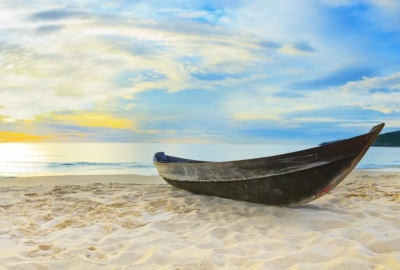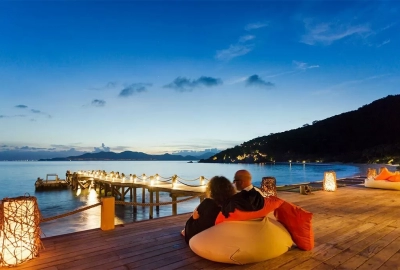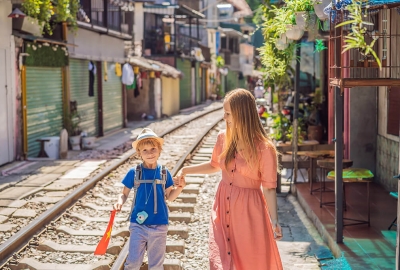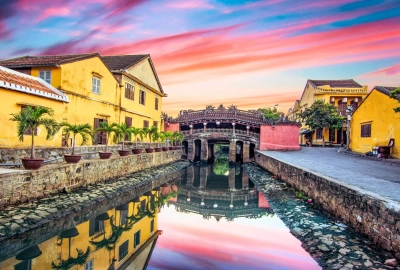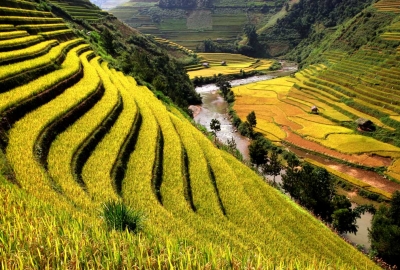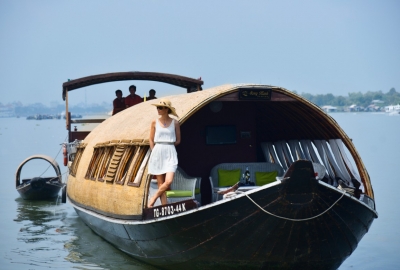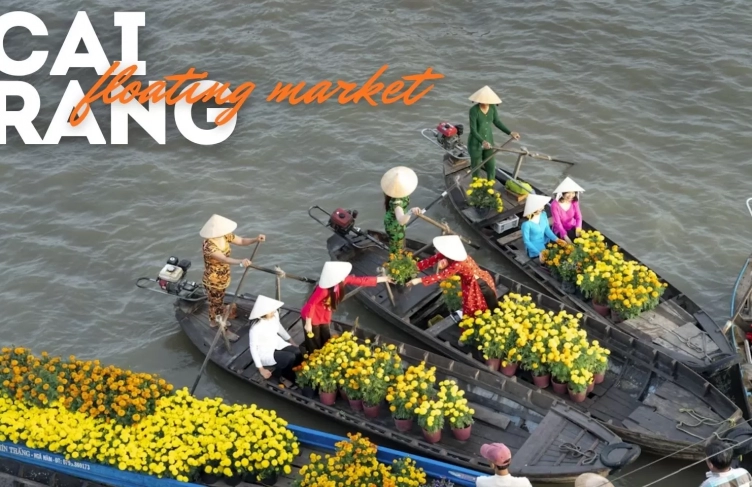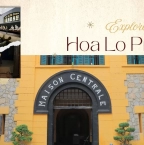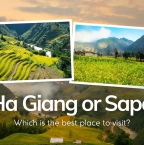
The Ultimate Guide For Sapa Travel

Nestled in the northern mountains of Vietnam, Sapa is a destination of breathtaking landscapes and rich cultural heritage. When you visit Sapa, you’ll find rolling rice terraces, misty valleys, and ethnic minority villages that preserve age-old traditions. This ultimate guide will help you explore the best of Sapa — from natural wonders to cultural experiences — for an unforgettable journey. |
Table of Contents
Why should you visit Sapa?
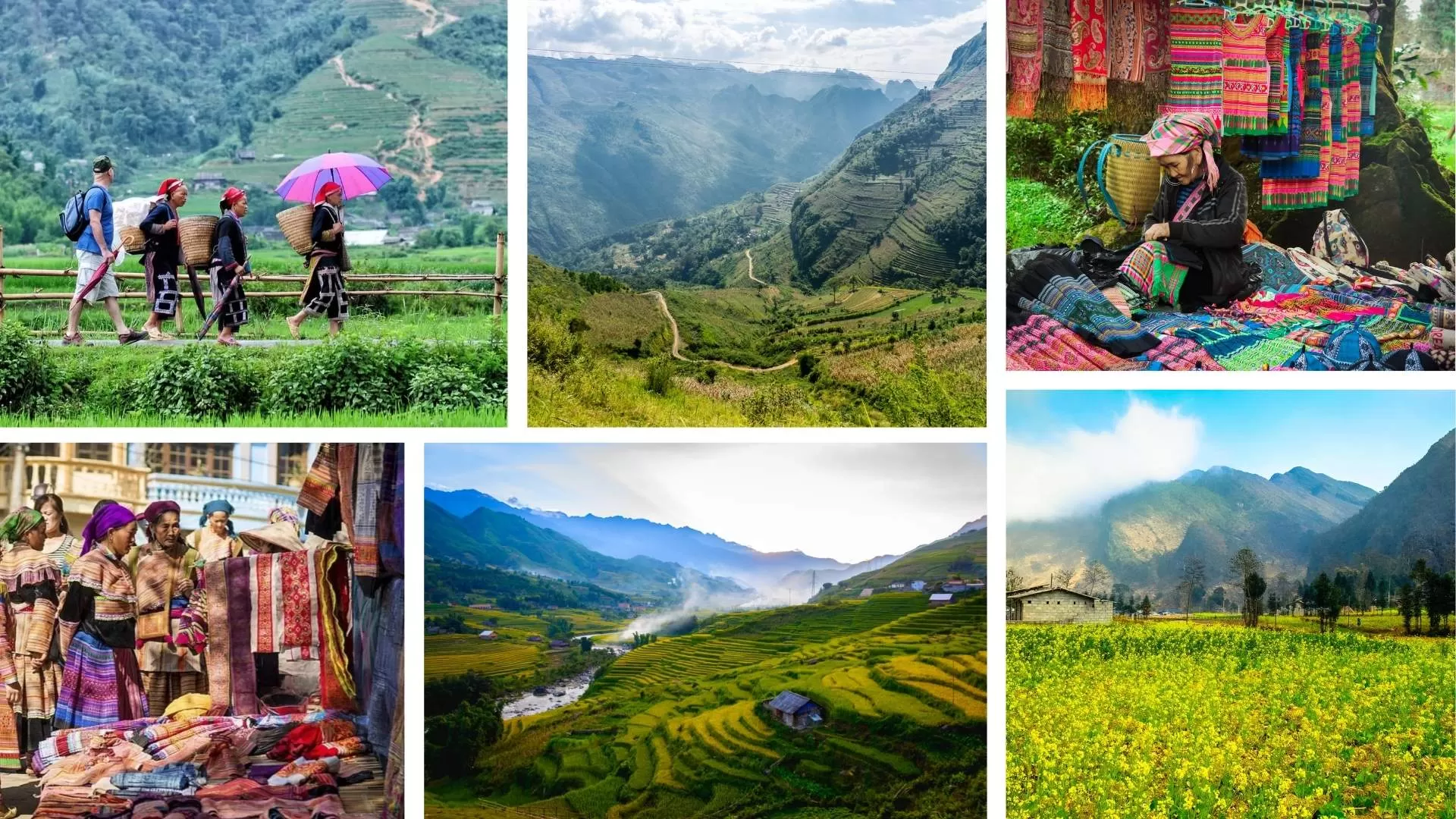
Travel along a winding road that climbs from valley to valley to an altitude of 1650 meters and you'll be amazed by the sight of terraced rice fields cascading down the slopes of majestic mountains.
Here, authentic small villages thrive, seemingly untouched by the passage of time, offering a glimpse into a world where tradition and nature coexist in perfect harmony.
Colorful in their ethnic costumes with headdresses and trinkets, the different ethnic groups inhabit this magnificent setting and shine on the roads and trails, warm and endearing.
Landscapes, unforgettable encounters and peaceful walks. Our invitation to live in harmony with a surprising NORTH!
Stay for 1 night with an ethnic family and prepare a meal with the hostess.
Reach out to the unknown, share, exchange and communicate.
Walk through the preserved and isolated small villages.
Meet the children going to school or surprising them during their daily exercises in the school yard.
Admire the women in costumes working in the rice fields, the men and the buffaloes.
Experience local daily life, the hemp weaving, indigo dyeing, H’mong embroidery, climb the staircases of rice fields, ever more beautiful, harmonious and attractive.
And get lost in the various ethnic markets, colorful and authentic meeting places for minorities.
What to see and do in Sapa
Located in the H’Mong land in the ethnic cradle of the North, Sapa is a place where you can experience the daily lives of people living outside of modern times. The landscapes are sculpted by rice fields and colorful markets, ensuring an awe-inspiring experience.
The ethnic minority villages in Sapa
Discover the ethnic minorities in the heart of the rice terraces. Explore the ethnic minority villages in Sapa, where you can discover the rich cultures and traditions of the people living in the heart of the lush rice terraces. Experience their way of life, admire the stunning landscapes and learn about the unique customs and history that define this captivating region.
Y Linh Ho village
Located in the Muong Hoa valley is the starting point for hikes. Cascades, sculpted rice terraces, a magnificent setting! A 6 km hike through the terraced rice landscapes to the village of Lao Chai.
This small village is inhabited by the Black H’mong minority. On the way, you will meet women from the village in ethnic costumes. You will be touched by their kindness and willingness to walk with you for a while.
Ta Van village

Ma Tra village
A village of Black H’mong minority – a tranquil and serene village situated in Sapa, renowned for its picturesque surroundings, including rice fields, bamboo forests and small streams.
Ta Phin village
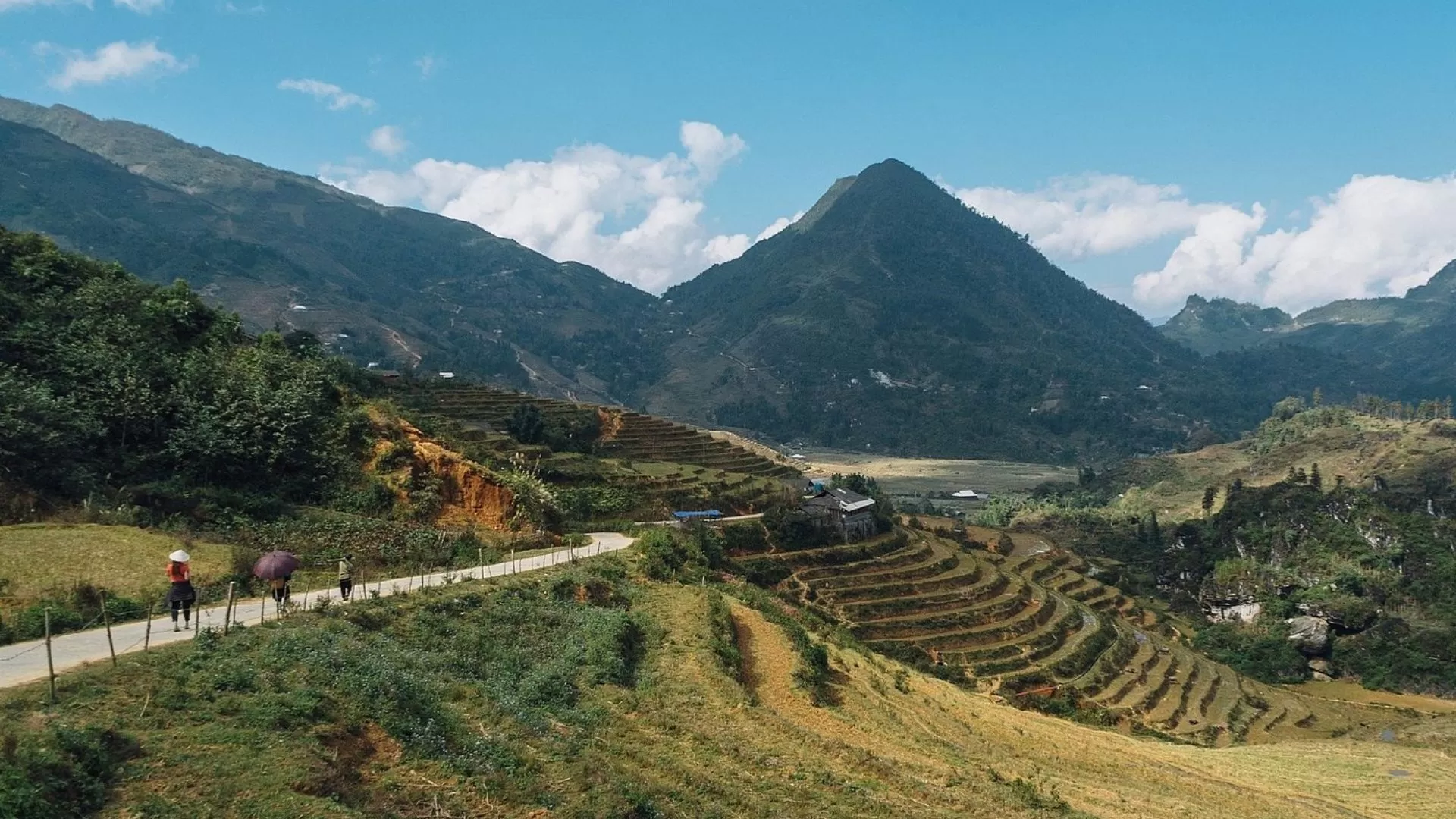
Thanh Kim – Su Pan village
The ethnic villages in the Thanh Kim valley. Located 20 km from Sapa, near Topas Ecolodge, the Thanh Kim valley is inhabited by the Red Dao and H’mong, who still maintain their traditions, culture despite the influences of modern life.
The hike offers beautiful panoramic views of the Thanh Kim valley. 3 hours of walking before reaching the village of Lech, inhabited by the Red Dao and H’mong. Discover the village, its inhabitants, their way of life, customs and typical dwellings.
The weekly markets not to be missed
When visiting Sapa, don't miss the chance to immerse yourself in the lively atmosphere of vibrant markets in Sapa. Let's explore!
Bac Ha Market
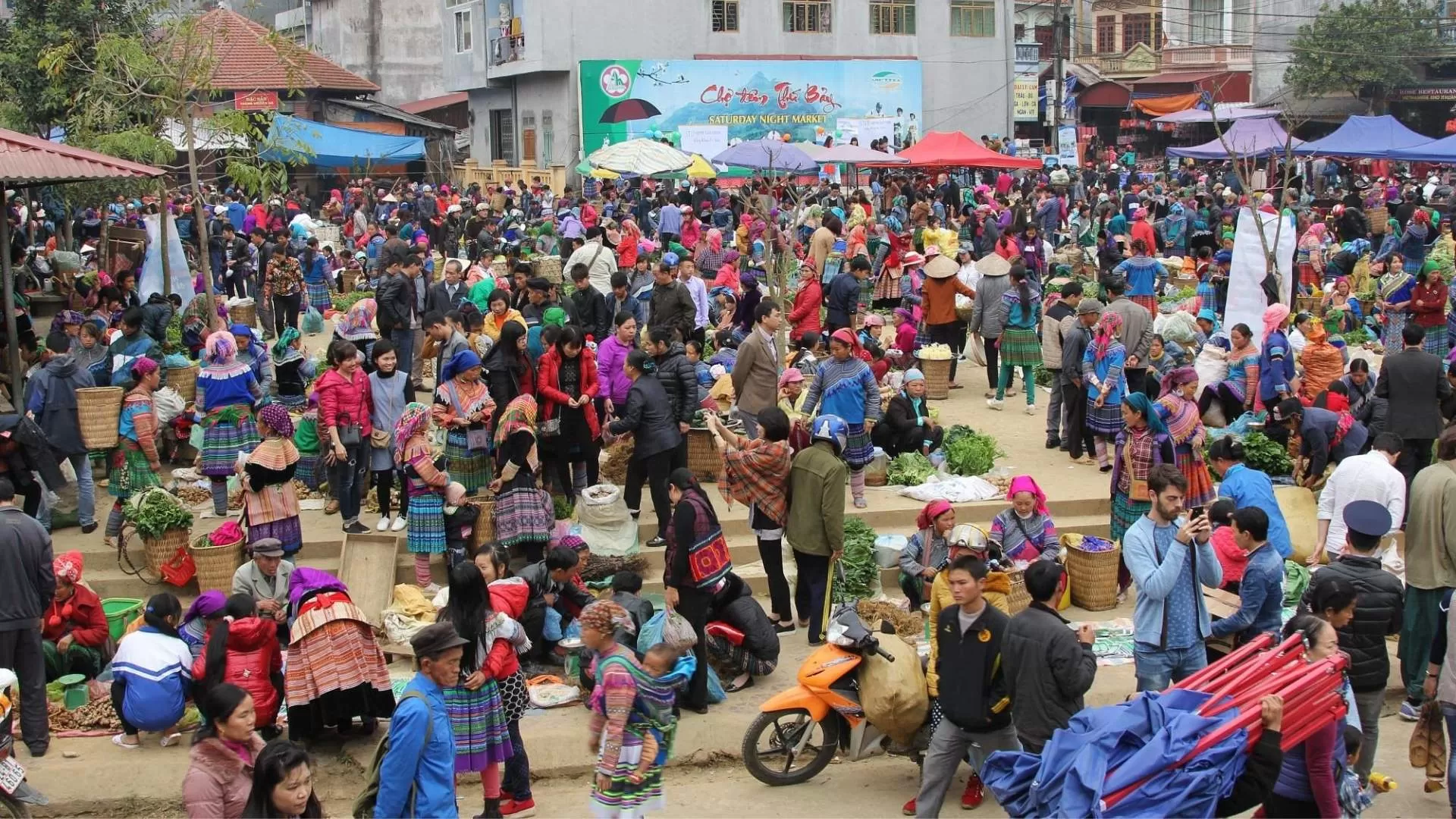 | 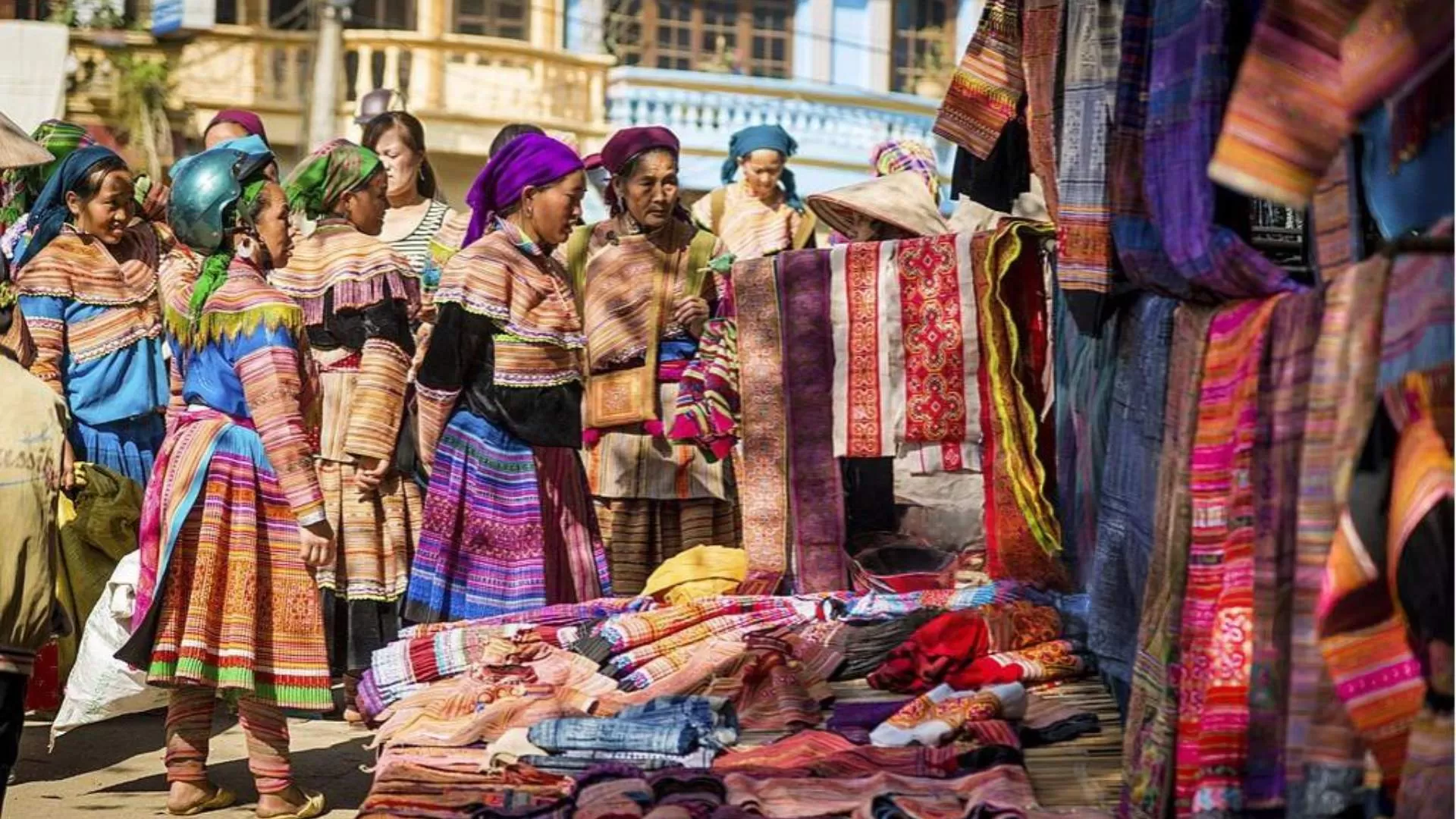 |
The Bac Ha market only takes place on Sundays: it is the most colorful market in northern Vietnam. Very touristy, but also very authentic. The minority ethnic groups, Hmong, Tay, and Phu La, come together here as the market is the place for commercial and social exchanges.There is a lot of excitement in the middle of a devilishly colorful crowd.
The Hmong women wear outfits made of large, richly embroidered skirts and a black top whose shoulders and neckline are also adorned with very “flashy” embroidery. They are adorned with beautiful silver jewelry.These ethnic groups arrive early in the morning, often after walking kilometers. Women carry a basket on their backs with their handicrafts or products to sell.
Can Cau market
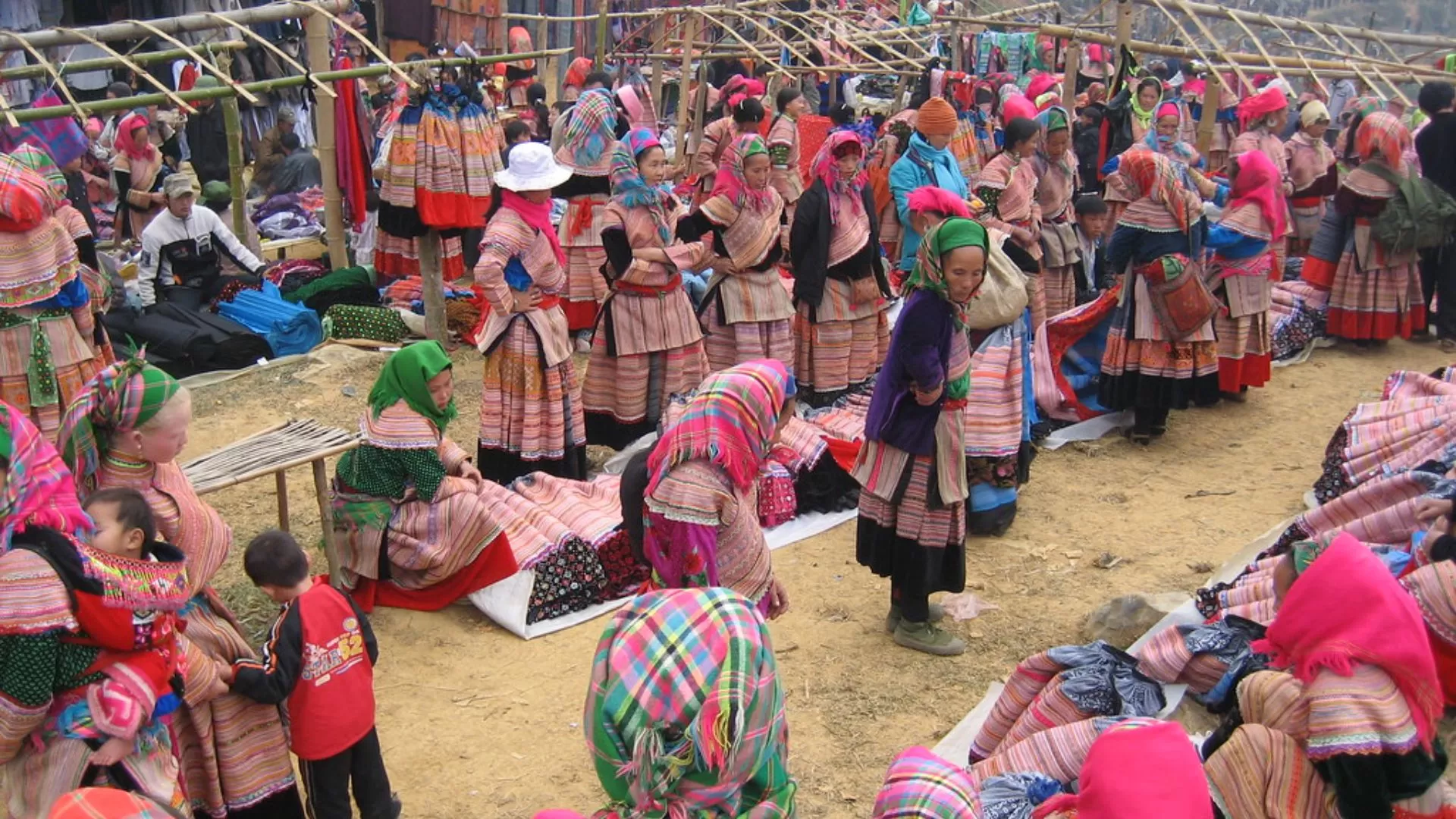
Saturday is market day. Two hours by car from Lao Cai, this village is in the valley, surrounded by mountains and terraced rice fields. Magnificent landscapes in a mountainous and domesticated setting!
The minority ethnic groups, H’mong, Black Dao, Black Hmong, and Tay, gather at markets as they are places for commercial and social exchanges. It is an opportunity to sell their handicrafts or trade with each other, to barter.
Coc Ly market
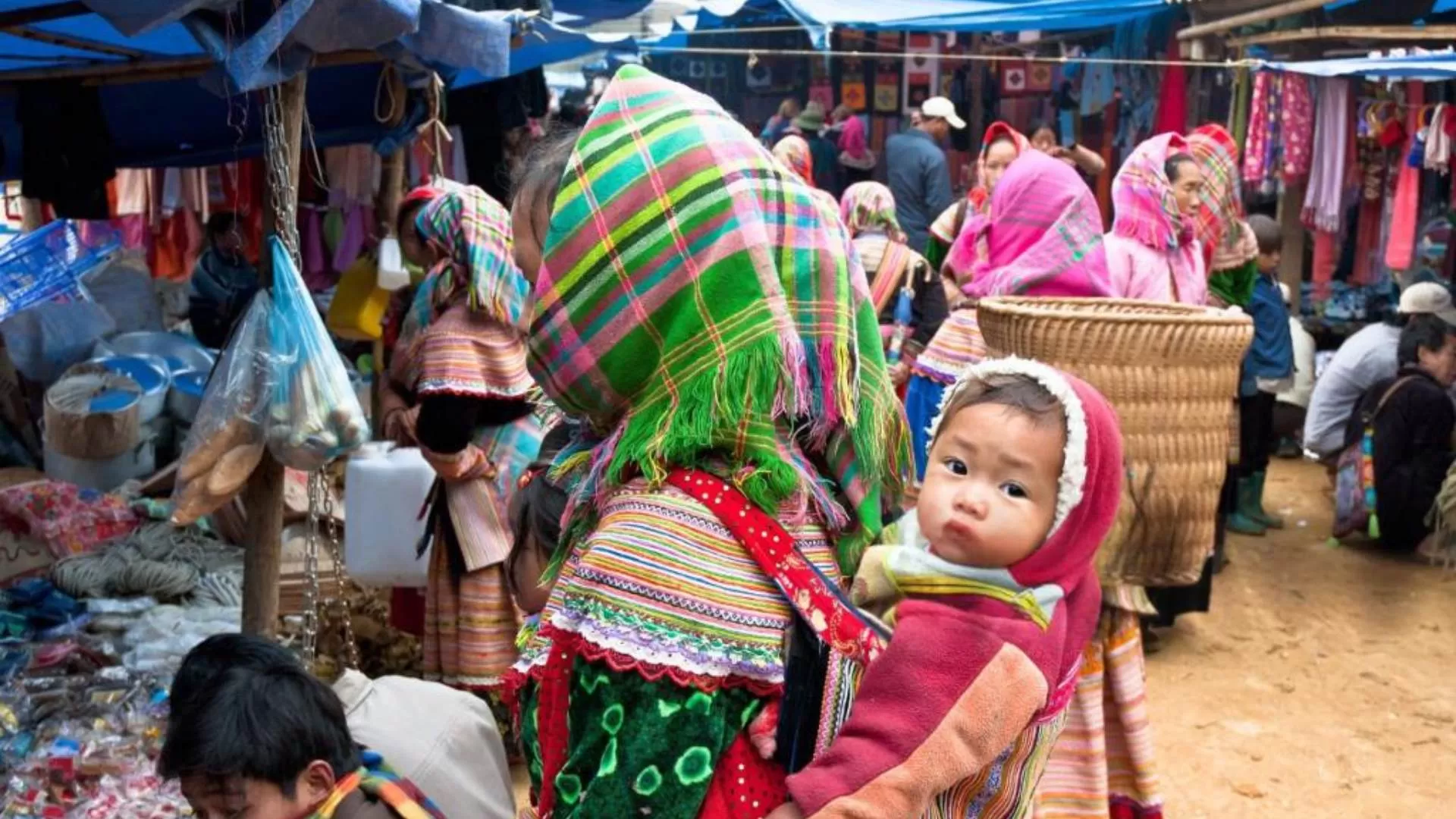
The market is a meeting place for these mountain people and an opportunity for trading, exchanging, and communicating. The isolated and picturesque setting guarantees a change of scenery!
You can also read: Top 7 local markets in Sapa you must visit
Sin Cheng market
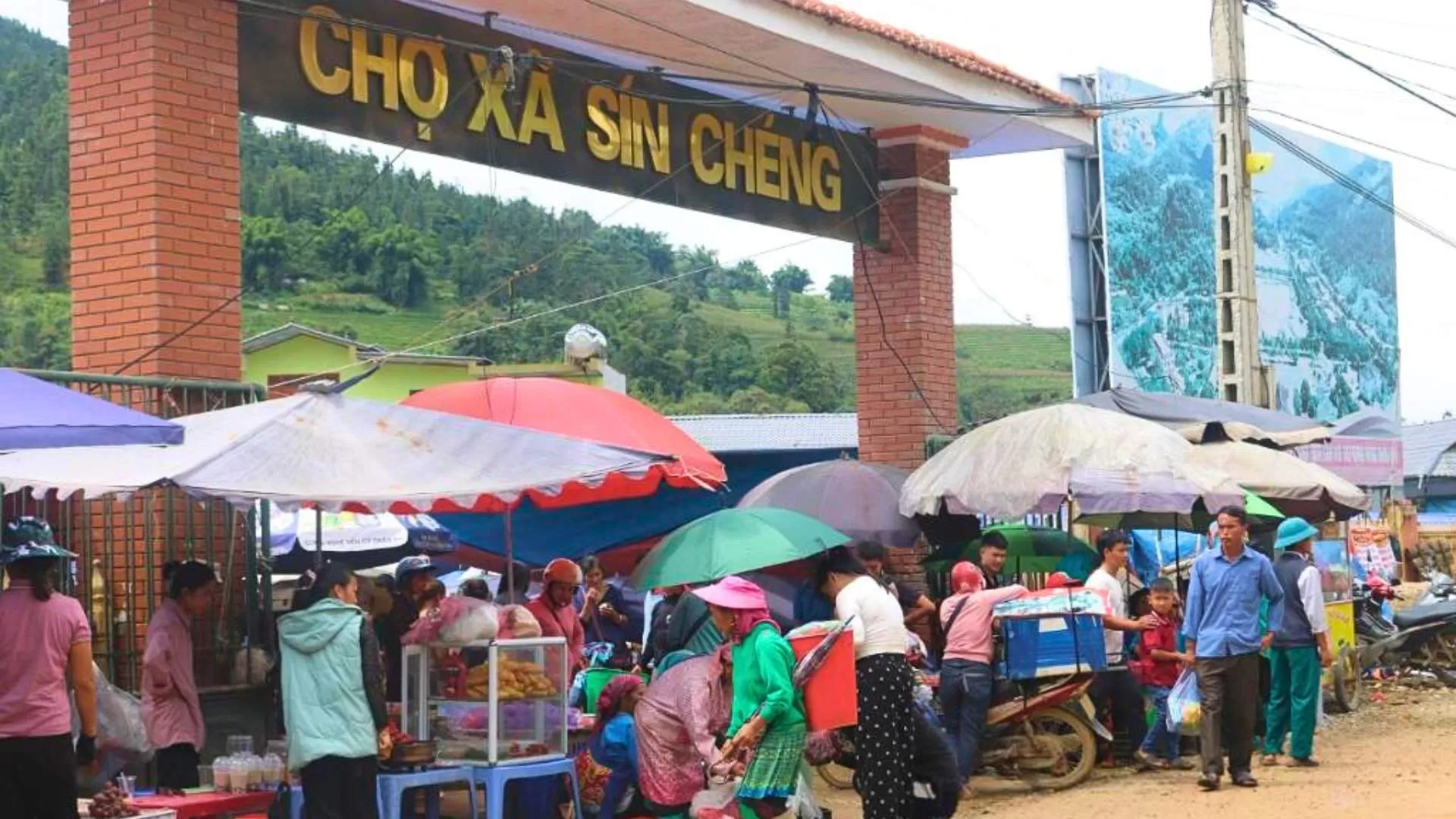
Depart for Sin Cheng Market, which is still preserved from mass tourism. This market is a place of meetings, commercial and social exchanges, frequented by the H’mong, Tay, Giay, Phu La and a few other ethnic minorities.
The ethnic minorities, such as H’mong, Black Dao, Black H’mong and Tay, gather at markets because they are meeting places for commercial and social exchanges. It is an opportunity to sell their handicraft products or trade with each other. Each ethnic group wears different costumes, creating a dazzling sight!
| Markets in Sapa |
|
Trekking on the mountains
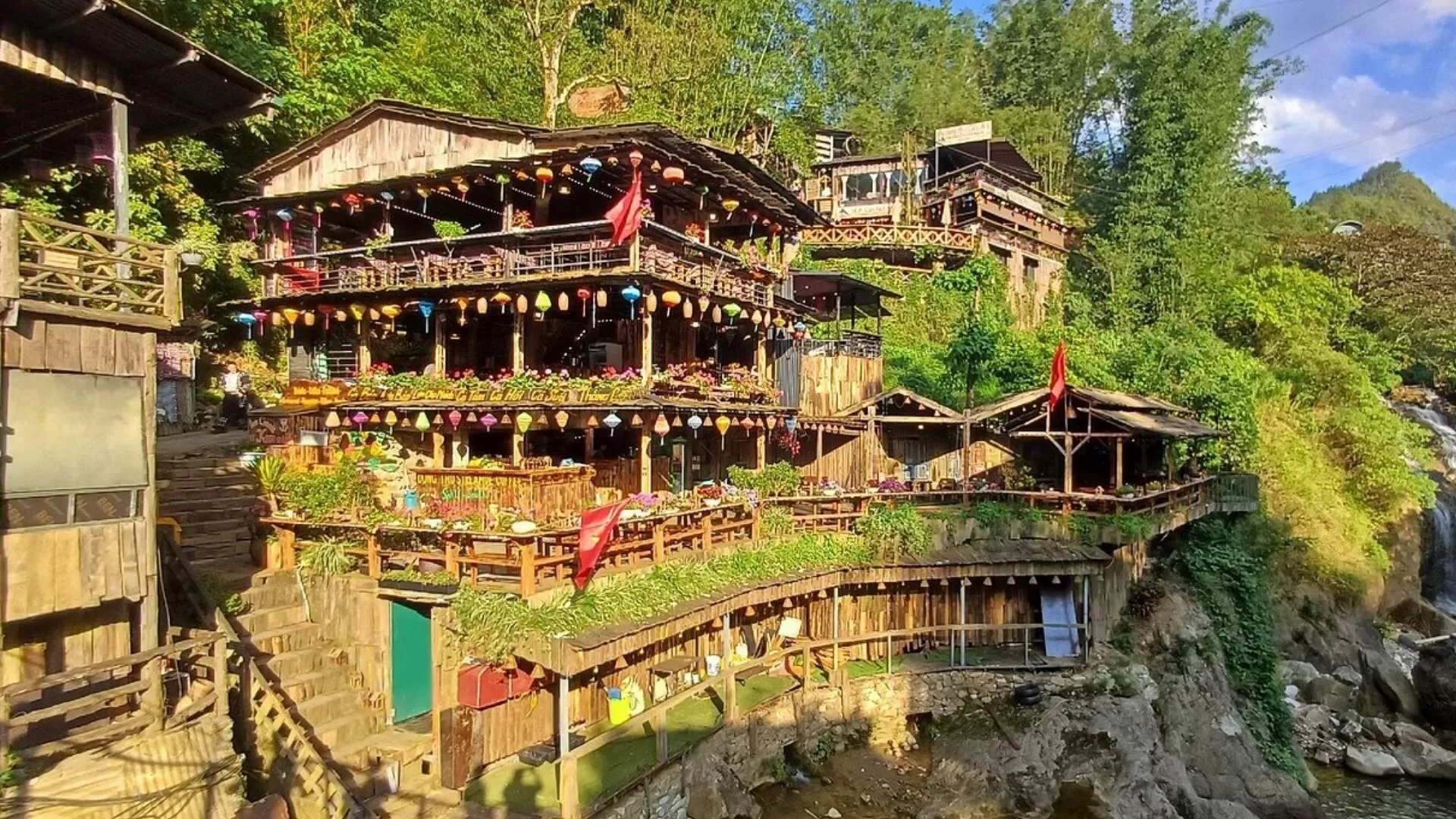 | 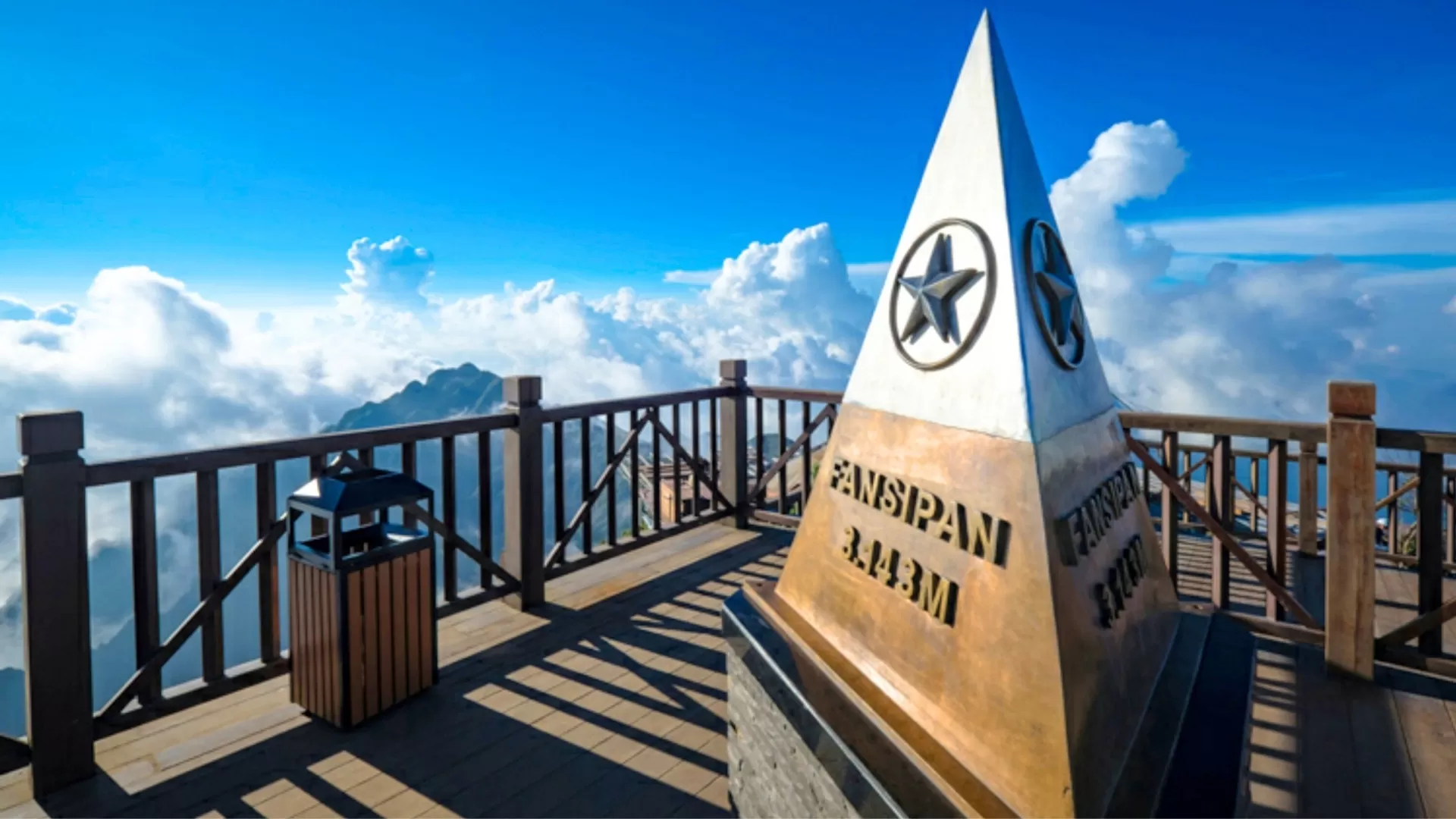 |
Trekking in Sapa is a popular activity among adventure enthusiasts and nature lovers. The region offers a variety of trails with varying difficulty levels, providing something for everyone. The most popular trekking routes include the Fansipan Mountain, Cat Cat Village and Ta Phin Village.
Trekking in Sapa offers a chance to explore the region’s rich culture, meet local hill tribes and witness the area’s spectacular rice terraces. The best time to go trekking in Sapa is from September to November when the weather is mild, and the rice terraces turn golden, creating a picturesque landscape.
How many days to visit Sapa
Planning your trip to Sapa depends on how much you want to explore. While a 3-day itinerary allows you to visit the highlights, meet ethnic minorities, and trek through rice terraces, a 4-day trip gives you a more relaxed pace, deeper cultural experiences, and the chance to discover hidden villages off the beaten path.
Explore Sapa in 3 days
Day 1: Ha Noi - Lao Cai - Sapa - Y Linh Ho - Lao Chai - Ta Van - Sapa
Evening departure from Hanoi by overnight train or sleeper bus (6–8 hours) through Northwest Vietnam’s scenic mountains.
Early morning arrival at Lao Cai Station, greeted by your private guide and driver.
Transfer to Sapa (approx. 1 hour).
Trek in Y Linh Ho Village: explore rice terraces and meet the Black H’Mong community.
Hike 6 km to Lao Chai Village: experience local life and culture.
Short trek (2 km) to Ta Van Village: discover the Giay ethnic minority’s crafts, including stone and wood carving, hemp weaving, and indigo dye preparation.
Return to Sapa in the evening for dinner and overnight at a hotel.
Day 2: Sapa - Ma Tra Village - Ta Phin Village - Bac Ha - Homestay overnight
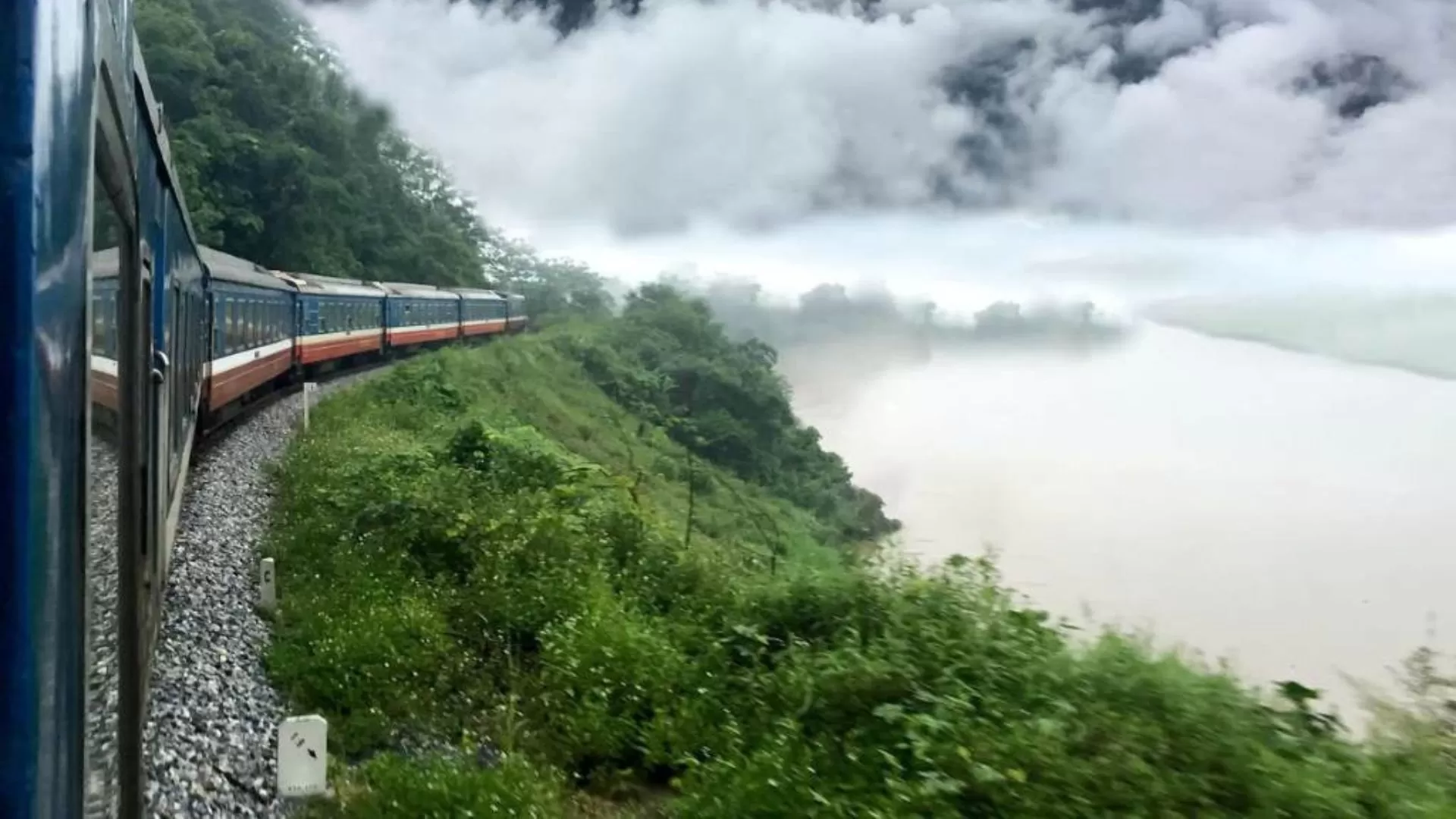
Trek to Ma Tra Village: meet the Black H’Mong community and observe their traditional embroidery and daily life.
Continue to Ta Phin Village: visit the Red Dao people, explore their herbal medicine practices and brocade weaving, and learn about local customs.
Zen Moment with the Red Dao: enjoy a therapeutic medicinal herb bath.
Transfer to Bac Ha by private car in the afternoon.
Explore Bac Ha Village: meet the Flower H’Mong, visit traditional stilt houses, and interact with locals.
Day 3: Bac Ha Market - Ban Pho Village - Lao Cai - Hanoi
Visit Bac Ha Market (Sunday only): experience one of northern Vietnam’s most colorful markets, with Flower H’Mong, Tay, and Phu La selling textiles, livestock, and crafts.
Observe local attire: women in vibrant embroidered skirts and silver jewelry.
Explore Ban Pho Village: meet the H’Mong and Tay communities and taste local corn wine.
After lunch, transfer to Lao Cai to board an express bus back to Hanoi, concluding the tour.
Explore Sapa in 4 days
Day 1: Hanoi - Lao Cai - Sapa - Y Linh Ho - Lao Chai - Ta Van - Sapa
(Same as Day 1 of the 3-day itinerary)
Day 2: Sapa - Ma Tra Village - Ta Phin Village - Bac Ha - Homestay overnight
(Same as Day 2 of the 3-day itinerary)
Day 3: Trekking Bac Ha - Homestay overnight
Spend the day trekking through Bac Ha’s remote mountain trails, passing rice terraces and small villages.
Visit lesser-known ethnic communities, interact with locals, and learn about their way of life.
Enjoy a traditional dinner and stay another night at the homestay.
Day 4: Bac Ha Market - Ban Pho Village - Lao Cai - Hanoi
(Same as Day 3 of the 3-day itinerary)
If you're looking for a journey filled with authentic experiences to Sapa — where wonderful landscapes meet rich cultural heritage — then the tours designed by Hanoi Voyages are the perfect way to begin your adventure. Hanoi Voyages proudly offers exciting and captivating tours to Vietnam
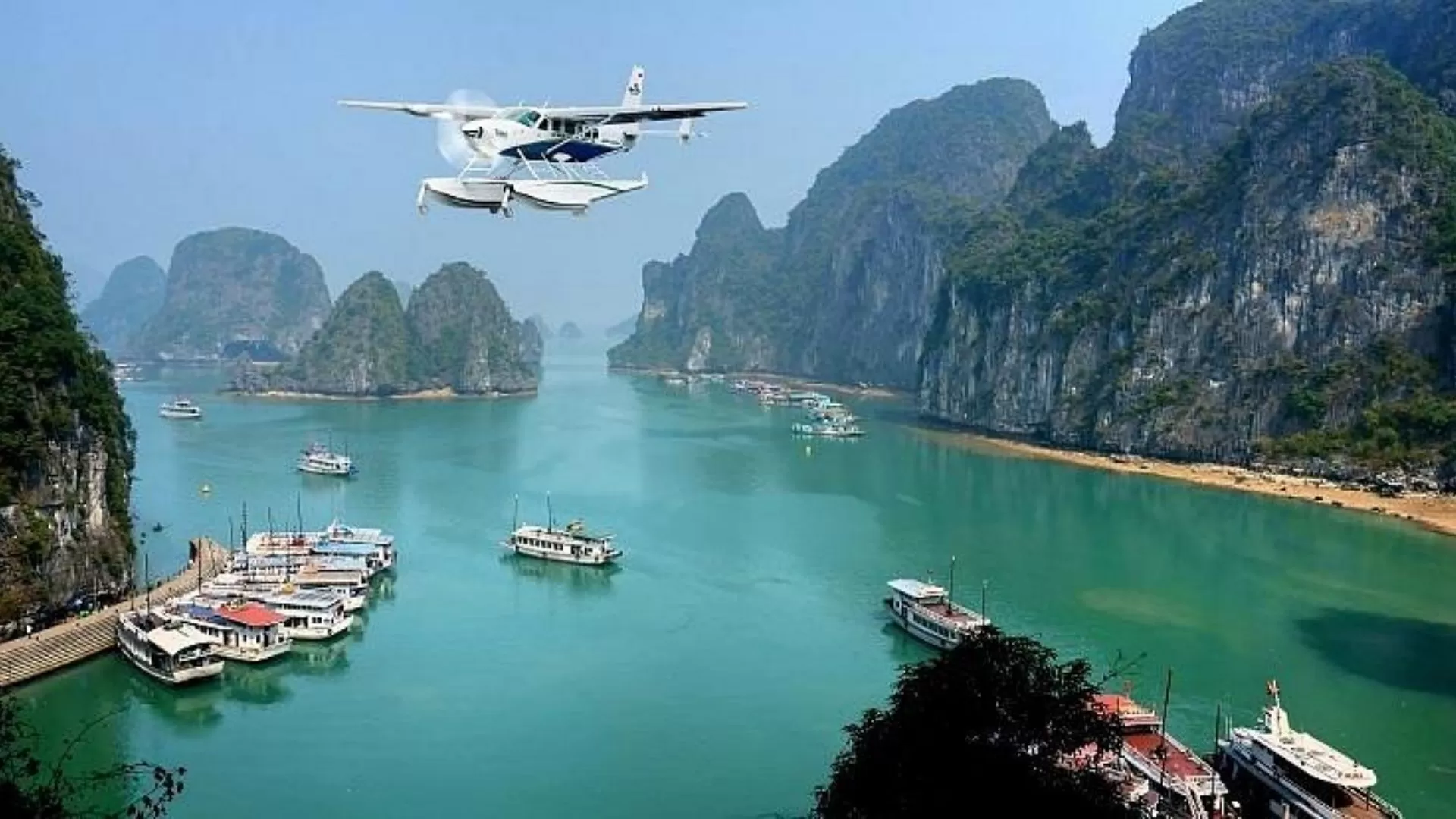 |  |  |
High-end North Vietnam 12 days Featuring a seaplane ride over stunning Halong Bay and luxurious regional experiences | Vietnam tour 18 days with Sapa Explore the authentic beauty of northern Vietnam and unwind on the beaches of Phu Quoc in the south | From the North to the bustling South. This classic tour highlights the country's beautiful and culture |
When is the best time to go to Sapa
Sapa is located in the northern region of Vietnam. In the high mountains of Sapa, there is frost and fog.
January – February: maximum temperature is between 10-15°C.
March – April: maximum temperature is between 17-25°C. It rains relatively little and the sky is cloudy.
May: temperatures rise to around 20-30°C.
July – August: the temperature continues to rise, and there is more rain, especially in July and August.
September: less rain.
October – November: the temperature drops to around 25°C and the rainfall decreases.
Visitors should come to Sapa from November to April to enjoy the chilling temperature and the breathtaking view on the mountains.
For more information: When is the best time to visit Sapa?
Where to stay in Sapa
Finding the right place to stay can make your trip even more memorable. In Sapa, you’ll find everything from cozy homestays surrounded by rice terraces to comfortable hotels right in town, offering options for every style and budget.
Homestay
 | 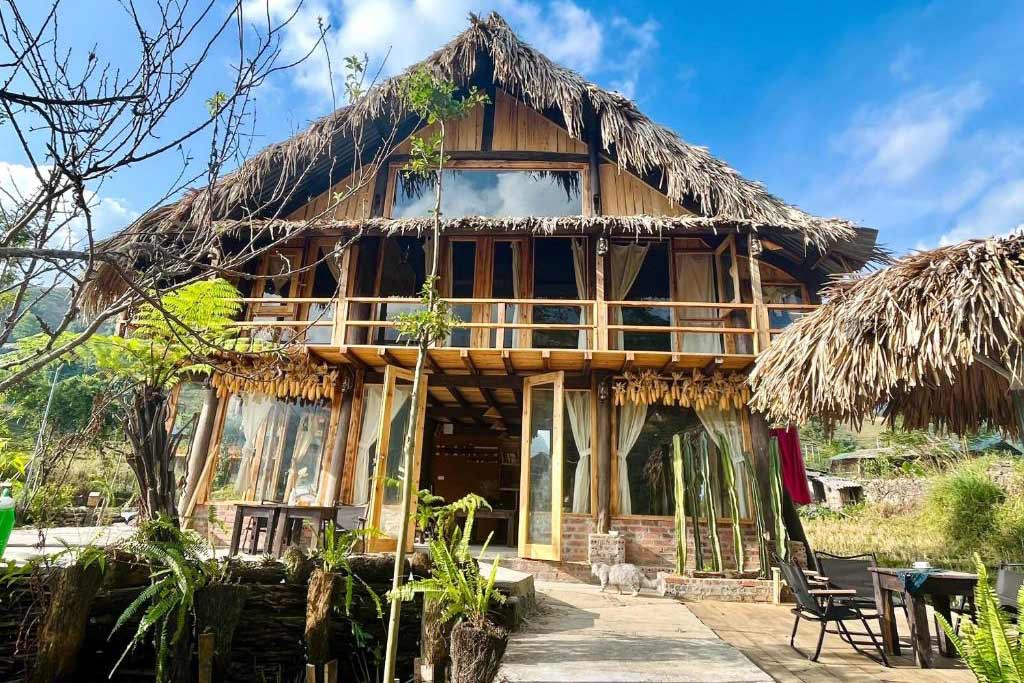 |
| Our customers when living in Sapa's homestays | |
Staying with locals in ethnic communities in the north is not only a unique experience, but also contributes to the development of remote populations in our country. The financial compensation goes entirely to the families invested in welcoming tourists. It’s an experience worth trying at least once!
Learn more: Top 5 Best Homestays In Sapa
Hotels in Sapa
Topas Ecolodge
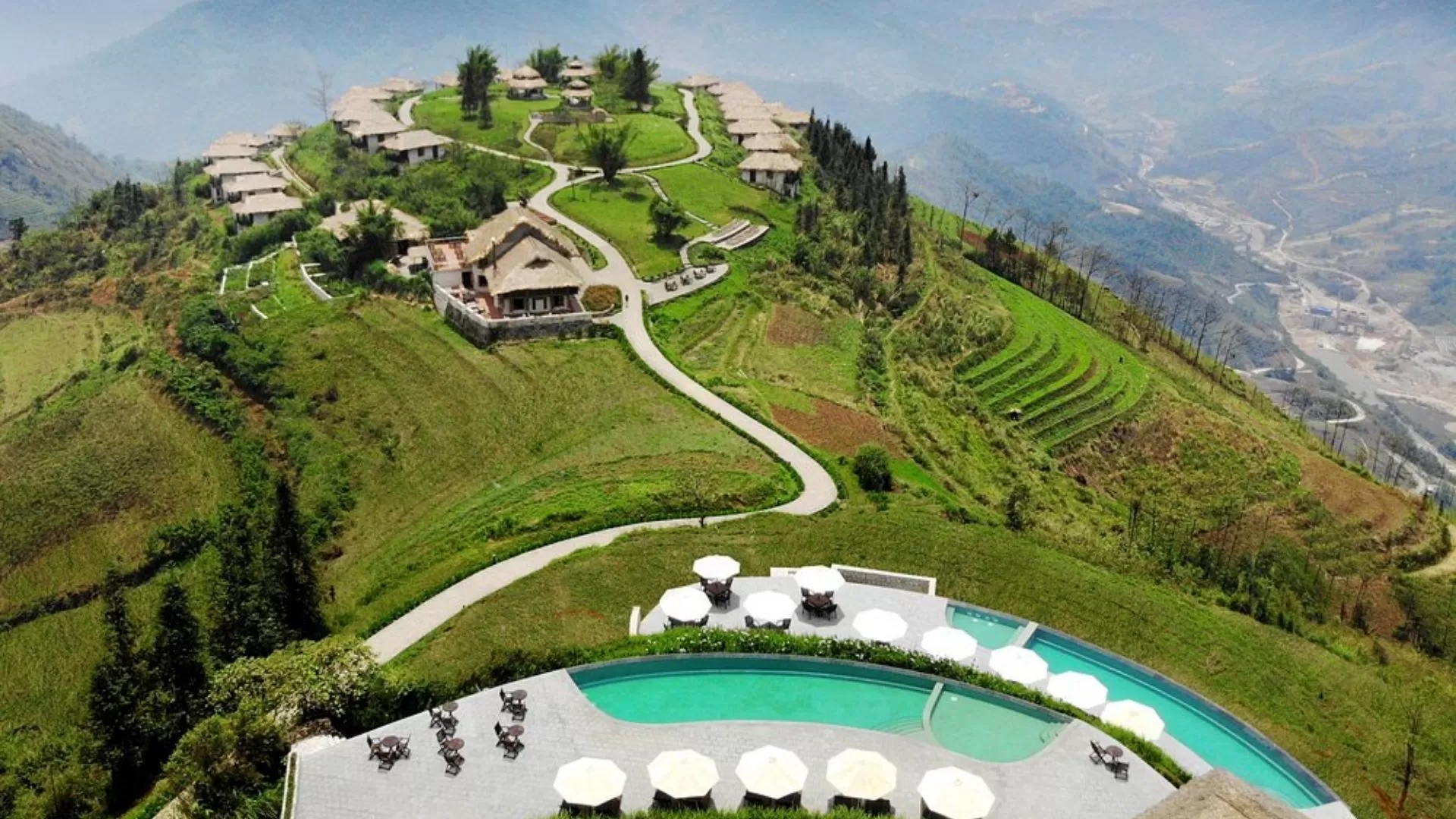
Topas Ecolodge is a charming resort located on top of a beautiful hill in the heart of the Hoang Lien National Park mountains, just 45 minutes from Sapa in northern Vietnam.
The 41 rustic mountain bungalows are designed with local white granite in a minimalist chalet style, offering you all the comforts while allowing the main attraction, the magnificent and raw natural beauty of Vietnam, to take center stage.
Price: about $280 per night
Pi’s Boutique Sapa Hotel
This 3-star hotel is located in Sapa and features a bar, garden, and terrace. Pi’s Boutique Sapa Hotel is a romantic hotel offering rooms with flat-screen TVs and balconies. The breakfast included in the price is highly appreciated by travelers visiting Sapa. Enjoy an incredible setting amidst the rice fields, in perfect harmony with nature, to recharge your batteries.
Price: about $40 per night
Aira Boutique Sapa Hotel & Spa
This luxurious 4-star hotel is located in Sapa, a 5-minute walk from the city center. Its strategic location allows the hotel to offer peace and serenity, away from the deafening noise of the city while remaining close to shops. Here, all rooms have a magnificent view of the mountain, Fansipan, and the Muong Hoa valley.
The hotel has many amenities, such as a gym, spa and pool.
Price: about $68 per night
BB Hotel Sapa
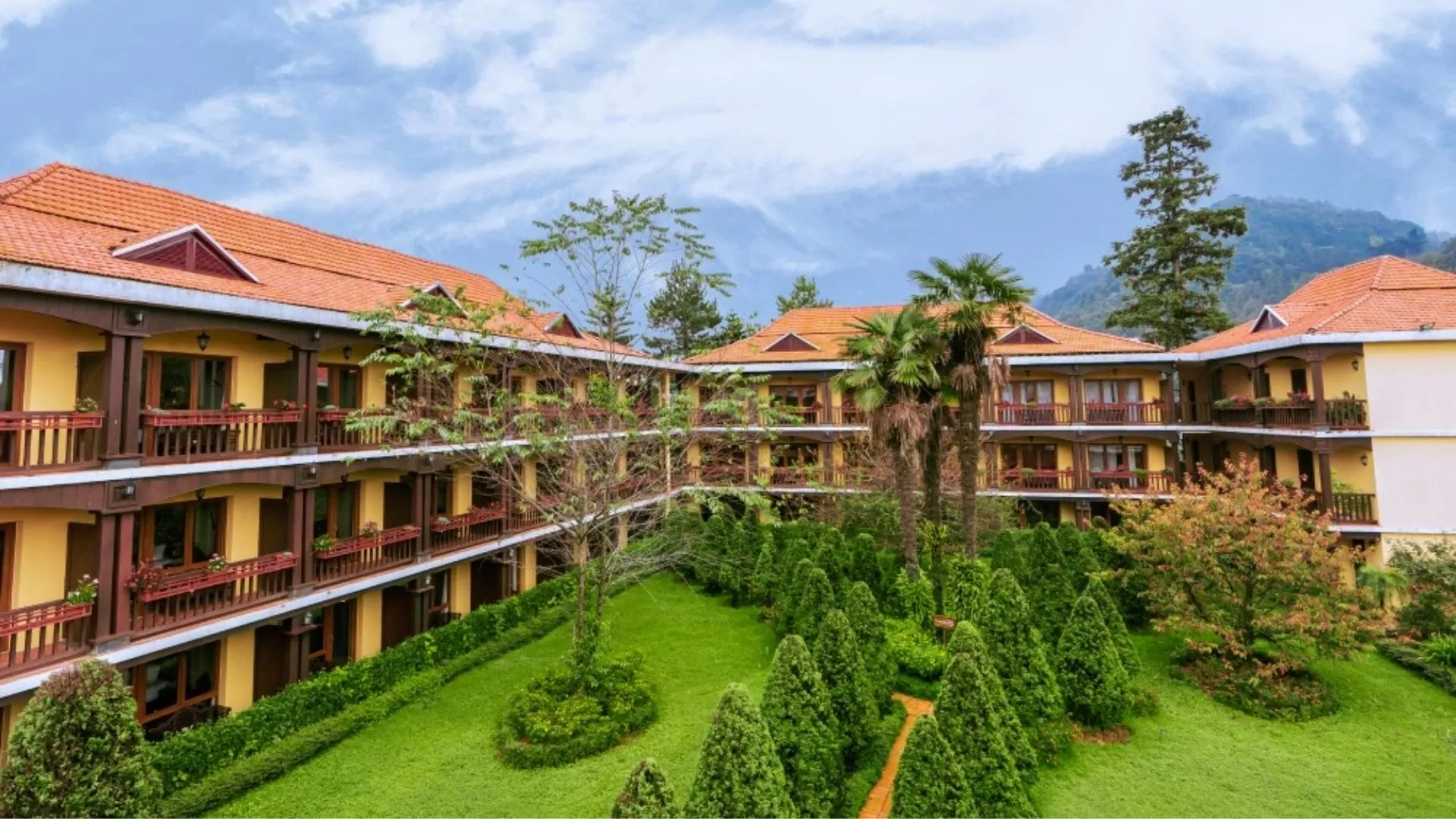
This well-located 4-star hotel in Sapa offers rooms with incredible views of the mountain, Fansipan, and the garden. To help you relax, the hotel features a restaurant, bar, heated indoor pool, spa, fitness center, tennis court and function room.
Price: about $45 per night
Learn more: Top 5 Luxurious Hotels In Sapa
Sapa is a captivating blend of majestic landscapes and vibrant traditions, featuring terraced rice fields, colorful ethnic markets and authentic cultural experiences.
Let Hanoi Voyages craft your dream adventure - start planning your Sapa getaway today!
Dream about your trip to Asia, in private
We are here to make it happen with youFREE QUOTE, WITHOUT OBLIGATION

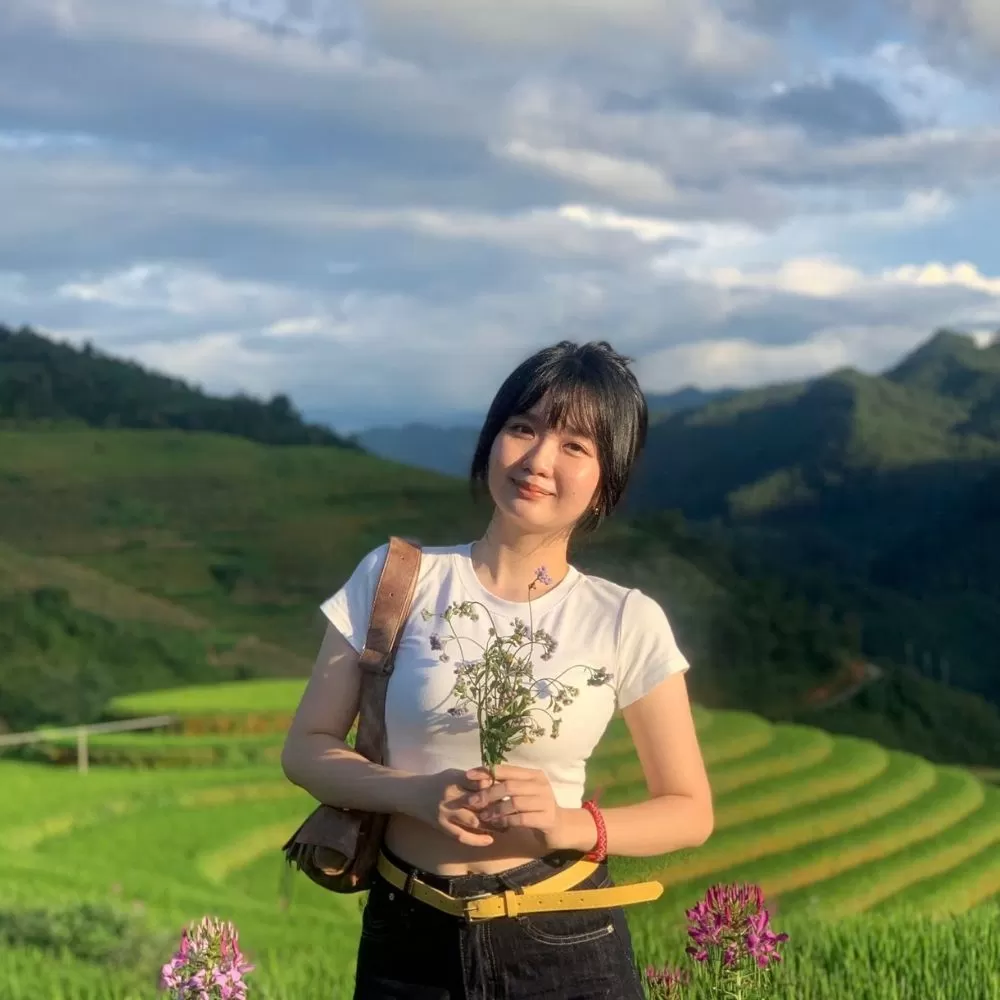





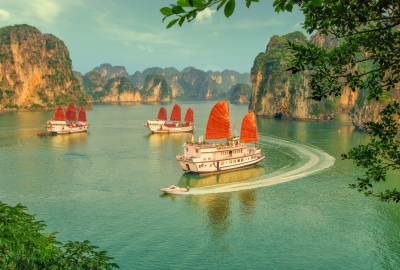
.webp)
